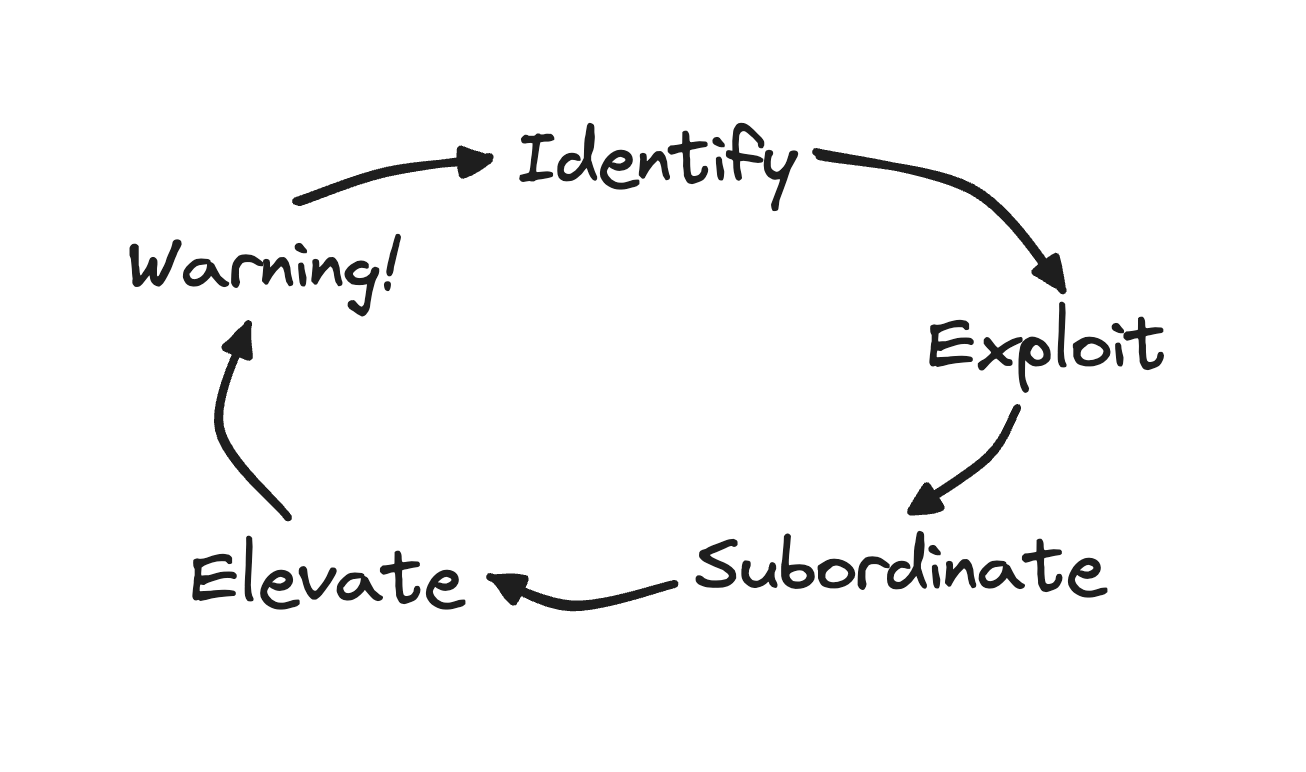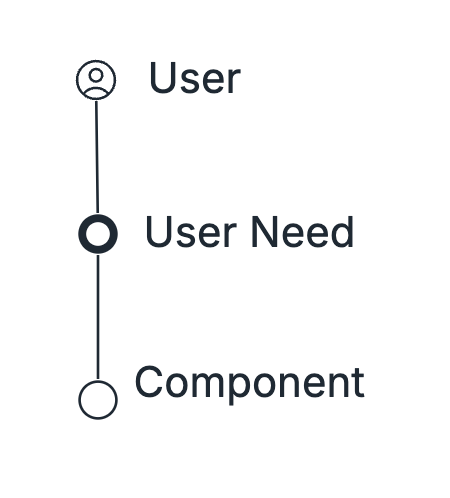Getting started
About the steps

The Five Focusing Steps1
The goal of this lesson is to give you an idea what we'll be doing with the system you select for learning.
In future lessons, each one of these steps will be covered in detail and explained thoroughly. Value Chain and Constraint are covered in detail in the next two lessons.
1. Identify the System Constraint
Starting with the simplest possible Value Chain of the system, begin by identifying the system constraint.
This step increases the level of detail in the Value Chain until a clear and actionable Constraint is identified.
2. Decide How to Exploit the System's Constraint
Once the Constraint is identified in Step 1, it is unlikely that the Constraint is 100% utilized.
This step will identify how to exploit (get the most out of) the Constraint as is, without removing the Constraint.
3. Subordinate Everything Else to the Above Decision
In order to fully exploit the Constraint, all the other parts of the system must be subordinated to the Constraint.
This step will increase the level of detail in the Value Chain to surface non-Constraints that need to be controlled to exploit the Constraint.
4. Elevate the System's Constraint
Once we are fully exploiting the Constraint and subordinating the system to the Constraint, we can work on elevating (getting rid of) the Constraint.
This step will begin introducing concepts and techniques from Wardley Mapping in order to provide maximum situational awareness and context for the decision of how to elevate the Constraint. The Value Chain created up to now will start to turn into a Wardley Map.
5. If a Constraint Has Been Broken, Go Back to Step 1
The Constraint being broken means that the system now has a new Constraint. We restart the whole process in a loop of continuous improvement.
This step also includes a review of which policies in our system are no longer useful. Those policies that were protecting the system from previous Constraint need to be removed or updated in order not to create an artificial policy Constraint.
Up next
As you may have noticed. Each one of the steps heavily relies on Value Chain and Constraint. In the next two lessons we will clarify these two concepts, starting with the Value Chain.
Go back
Getting started
Select a system you care about to improve with this guide. Choose a business, product, or any system you are familiar with for easier progress through the step-by-step procedure.

Up next
Value Chain
Learn how value flows through a system using a Value Chain, consisting of users, their needs, and components that fulfill those needs. This guide explains the basics and visual representations of a Value Chain in the context of a tea shop.
The Five Focusing Steps come from Eliyahu M. Goldratt's Theory of Constraints (ToC). However, there is no need to be familiar with ToC to follow this step-by-step guide.
